The Dodge Challenger and Charger are both offered with a supercharged Hemi in Hellcat and Redeye trim, while the coupe also has the Super Stock trim level. All of these high performance cars, as well as the 2018 Demon, rely on a supercharged 6.2-liter Hemi V8, but the power levels vary from 707 to 840. Some people believe that the Redeye and Super Stock are simply Hellcat engines with larger superchargers and unique engine tunes, and they are sort of right, but there are far more differing components between the original Hellcat Hemi and the Redeye or Super Stock engines.

Today, we bring you a look at the key differences between the supercharged Hemi engines that offer 707 or 717 horsepower and those which offer 797 or 807 horsepower. To do so, we are actually showcasing components from the 2018 Demon, most of which are in use in the Challenger Redeye, Charger Redeye and Challenger Super Stock.
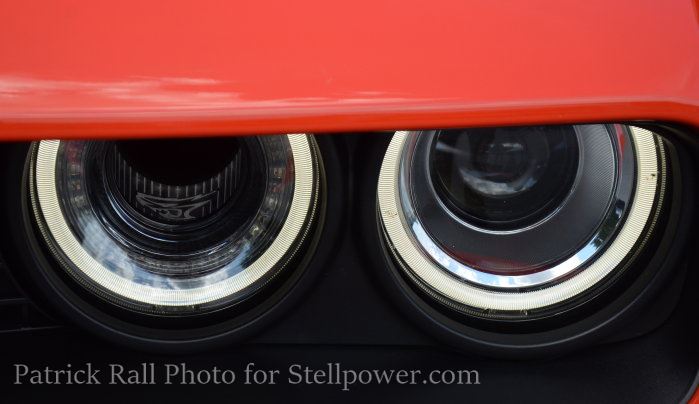
Engine Air Intake System
We will begin with the engine air intake system, which doesn’t vary as much with the newer supercharged Challenger and Charger models. The original Hellcat-powered models had an air box setup that drew some air through the driver’s side headlight and some from the area in front of the driver’s side wheel. The front-facing hood scoop of the early Hellcat cars fed air into the engine bay, not into the engine. The 2015 Hellcat engine air intake system is shown below.
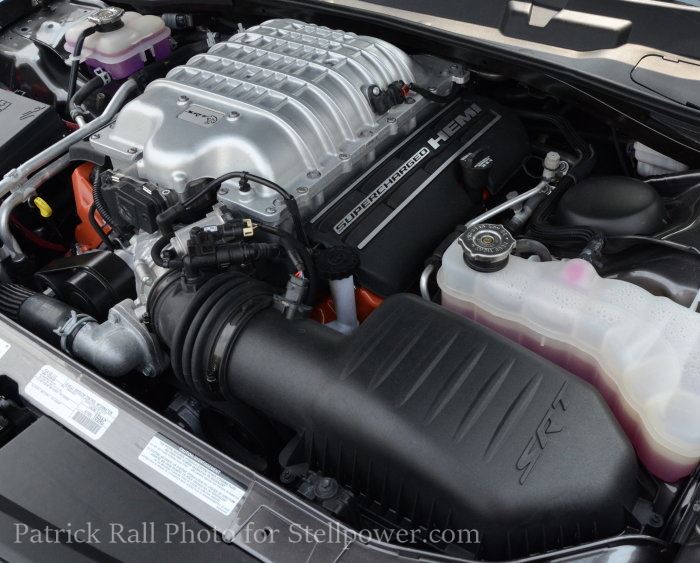
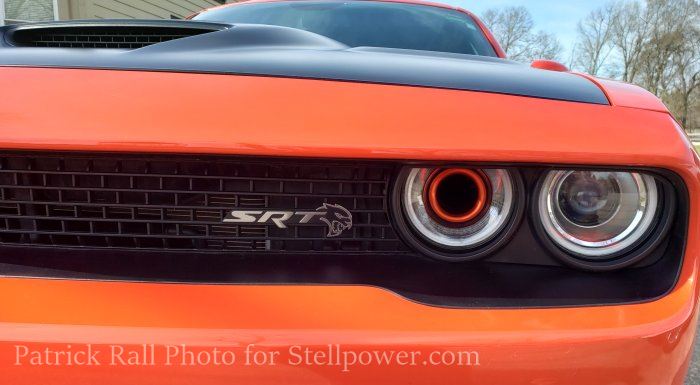
When the Challenger Redeye was introduced wit 797 horsepower, it sported a new dual-snorkel hood that provides cool air directly to the engine air intake system. This new system still draws some air through the headlight and wheel well area, but the scoops feed cold air to an open-top filter box that seals against the bottom of the hood. The Redeye also has a much larger filter box, measuring 14.8 liters and allowing for a conical filter that flows 72% better than the flat filter in the early Hellcat models. When the Charger Redeye was introduced, it still has a single front-facing scoop, but like the Challenger, this new hood design channels cool air directly into the gigantic filter box. The Challenger Super Stock uses the same induction setup as the Redeye.
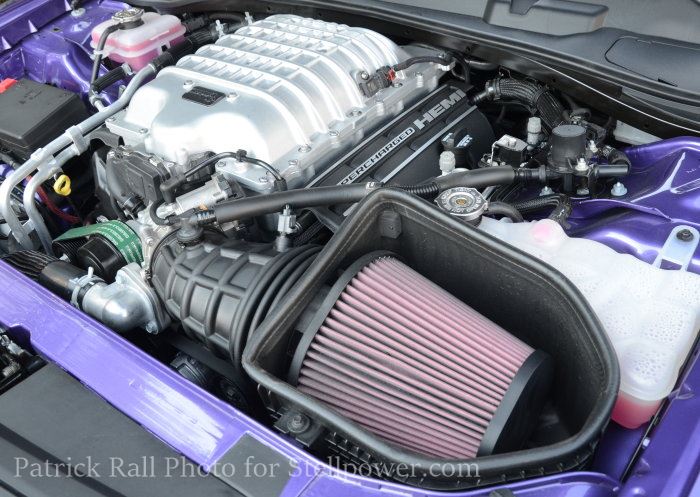
It should be noted that when the Challenger Redeye was introduced with the dual snorkel hood design for 2019, the non-Redeye Challenger Hellcat also got the new induction system, leading to an increase of 10 horsepower – from 707 to 717. As a result, the non-Redeye and Redeye Challengers have shared the same basic engine air intake setup since 2019.
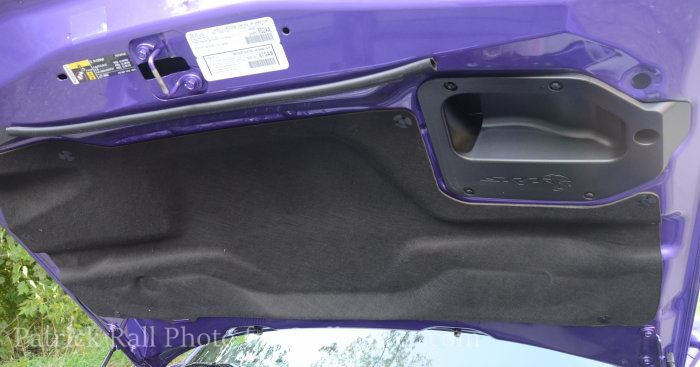
In addition to the hood system that feeds air directly into the engine air intake system, the tube that sends air from the filter box to the throttle body flows 25% better than the original Hellcat engine air intake system. That tube is connected to a 92mm throttle body on all of the Hellcat, Redeye, Super Stock and Demon models.
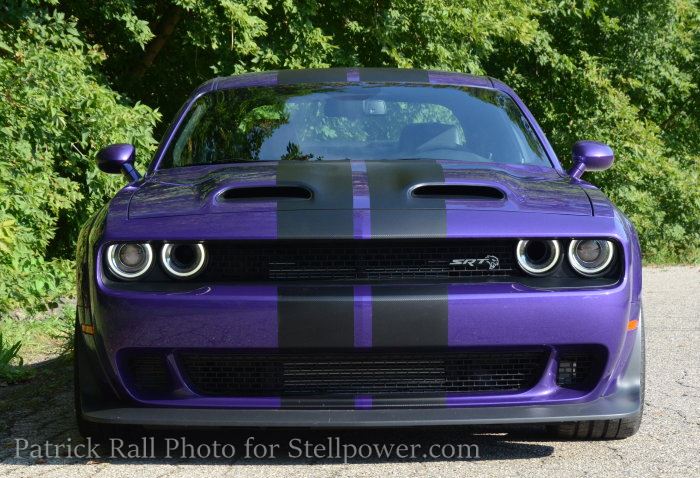
The Supercharger
The one key difference between the original Hellcat Hemi and the Redeye, Super Stock and Demon is the supercharger. All factory-supercharged Challenger and Charger models feature an internally-intercooled IHI supercharger, but there are two different sizes. The original Hellcat models with 707 or 717 horsepower rely on a 2.4-liter supercharger while the Redeye and Super Stock have a 2.7-liter unit. This extra volume was added by increasing the length of both internal rotors by 28mm compared to the 2.4L supercharger. Also, maximum boost press in the 707/717 horsepower models is 11.6psi while the 797/807 horsepower models rely on 14.5 pounds of boost pressure. The 2.36 to 1 drive ratio of the Redeye and Super Stock leads to a maximum internal supercharger speed of 15,340rpm when the engine is spinning at 6,500rpm.
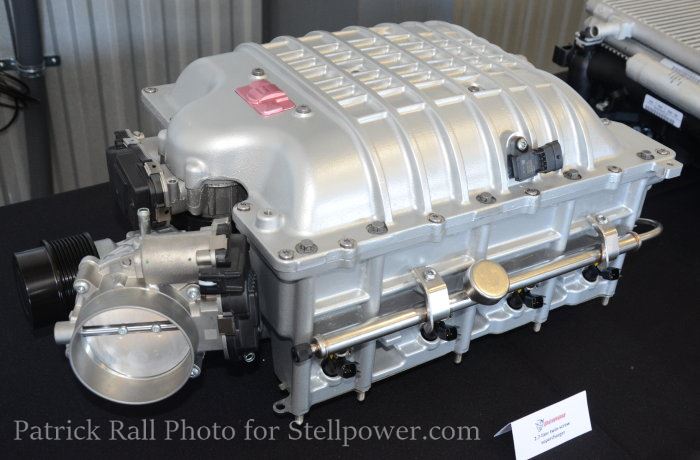
Also, the Redeye and Super Stock both feature a revised front bearing plate, leading to smoother air flow into the supercharger and added cooling effect for that hardworking bearing plate.
The Fuel System
With so much air being jammed into the engine of the Challenger and Charger Redeye, the supercharged Hemi has tremendous fuel requirements. Like the Demon, the Redeye and Super Stock engines use high flow fuel injectors that deliver 67g/s with a 20-degree bent spray and a 17-degree spray cone.
In addition to the high volume fuel injectors, the Redeye and Super Stock models feature a twin in-tank fuel pump setup that offers a 27% increase in overall fuel pressure compared to the original Hellcat.
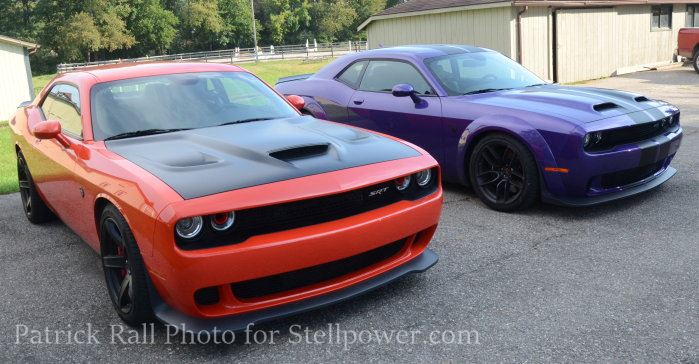
To get an idea of how much fuel flows through the Redeye and Super Stock engine, consider this. The fuel system in the 797- and 807-horsepower models is capable of moving 510 lb/hr, or about 1.36 gallons per minute. Most shower heads flow at a rate of 2 gallons per minute, so the flow of fuel in these supercharged Dodge performance cars is almost as heavy as your shower head.
The Hemi Cylinder Heads and Camshaft
After the air is compressed by the supercharger, it flows into the cylinder heads. All of these engines use a hemispherical combustion chamber design, which is where the Hemi name originates. These heads are constructed of high strength aluminum alloy (A356) with heat, quench, and solution treatment with a 34.5-degree valve angle and M14 spark plugs. The Redeye/Super Stock engine has single groove collets for improved stability, revised valve springs and revised spring retainers, with 33% better oil cooling at the tips of the rocker arms. Thanks to the hollow intake valves and sodium-filled exhaust valves, the Redeye and Super Stock heads can handle heat loads of up to 800C.
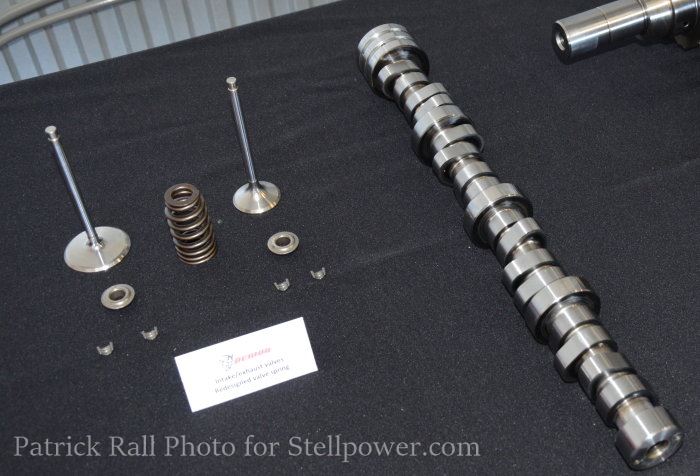
As you might expect, with a different intake setup, different supercharger and different cylinder heads, the Redeye and Super Stock engine uses a different camshaft profile than the original Hellcat. Like the Demon, the 797- and 807-horsepower Hemi V8s have an intake lift of 14.25mm, and exhaust lift of 14mm, lobe centers of 109 degrees and 137 degrees and durations of 224 degrees and 240 degrees at 0.050″ of lift. All of these engines feature hydraulic roller tappets and hydraulic actuated variable valve timing, with a total variation of 17 degrees, but unlike the less powerful Hemi engines, none of the supercharged mills offer MDS.
The Hemi Engine Block
The Redeye and Super Stock use red-painted engine block that is constructed of high strength cast iron with 4-bolt steel main caps. The block is deck plate honed to reduce engine bore distortion at high engine speeds while the main bearing cap bolts offer an increase of 47% of cylinder head clamp load, allowing this engine to withstand the incredible firing pressure at peak power levels.

The Rotating Assembly
Just about everything in the rotating assembly of the Redeye and Super Stock engines has been revised to handle the extra loads when compared to the original Hellcat Hemi. This starts with a forged alloy steel crankshaft that features a 90.9mm stroke and revised balancing for the added travel. The Redeye also has induction-hardened crank bearing surfaces and high load capacity bearings, with each individual journal having optimized main bearing clearances that lead to differences as large as 10 microns from one to the next.

The pistons used in the Redeye and Super Stock are also unique when compared to the original Hellcat, with these forged high strength aluminum alloy units featuring an inclined inner box wall, making them whole piston stronger. These pistons are subject to 100% better oil cooling flow thanks to cooling jets in each cylinder, helping to reduce internal engine temperatures during extended periods of high engine speeds.
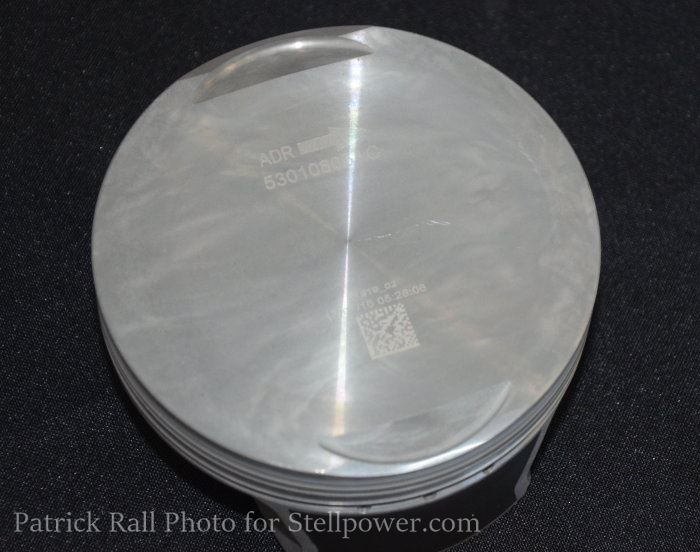
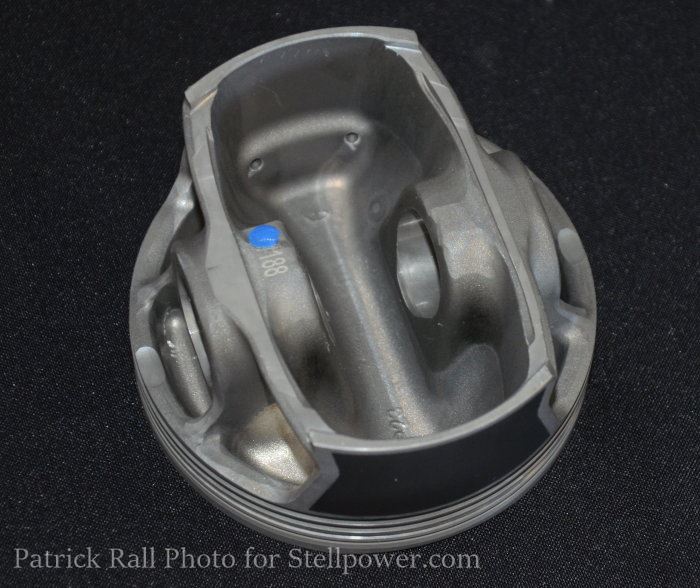
Finally, the connecting rods in the Redeye and Super Stock engines are unique, showcasing an enlarged “big end” and shank with a tapered “small end” and high tensile fasteners at every point. These are the strongest rods used in any modern production Hemi, designed to withstand more than 200,000 psi of internal pressure.
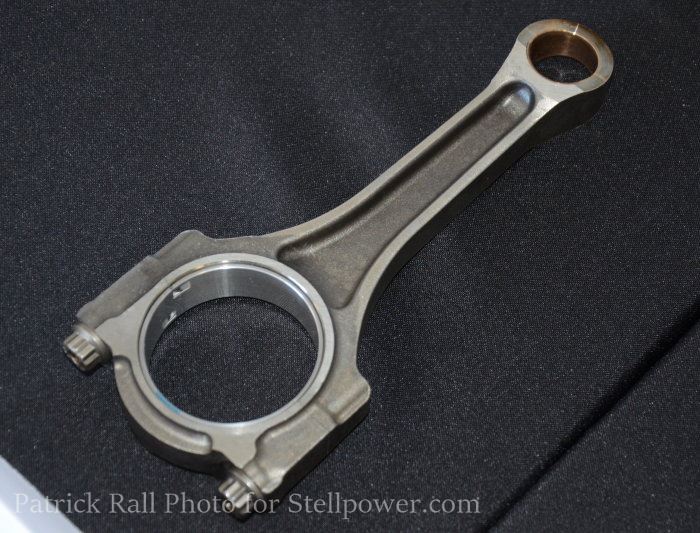
The rotating assembly in the Redeye and Super Stock models faces more than 11 tons of force during the compression stroke and more than 3 tons of force on the exhaust stroke, each of which happens 50 times per second. In other words, the pistons, connecting rods, bearings and crankshaft and being pummeled with a combined load of more than 1.4 million pounds of force…every single second of a hard pull. Most engines wouldn’t survive a single compression stroke of the 807-horsepower Challenger Super Stock.
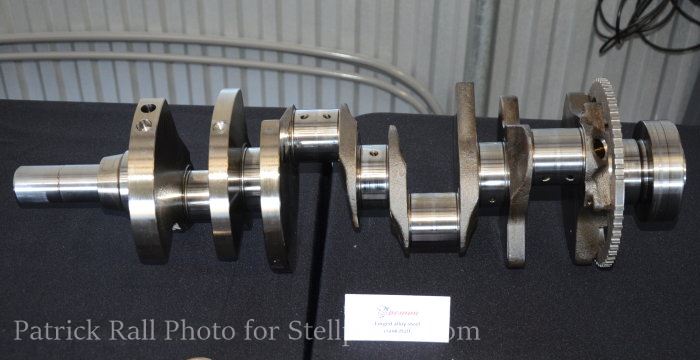
The Exhaust System
The exhaust gases of the Redeye and Super Stock engine exit through a set of double wall, high temp tubular stainless steel exhaust headers, a set of high temperature, close-coupled catalytic convertors and a low-restriction dual exhaust system that measures 73mm in diameter.

All supercharged modern Dodge products feature an active valve exhaust system that lowers the sound levels under light throttle while allowing the system to boom at full volume at wide open throttle in addition to yielding only as much backpressure as is needed.
Engine Lubrication
The supercharged Redeye Hemi requires a tremendous amount of oiling to stay cool under load. The lubrication system starts with a high flow oil pump that is driven off of the front of the crankshaft, yielding 25cc per revolution. This pump sends oil through the normal lubrication channels of the engine, but it also directs oil to the 8 high volume piston cooling jets, offering roughly double the cooling flow of the standard Hellcat overall and about 33% more oil flow at the rocker arms.

The Cooling System
Finally, while we mentioned cooling several times above, the cooling system of all of the Hellcat vehicles feature one of the most elaborate dual-path cooling systems of any modern production vehicle. At the front of the cars, the cooling module includes the high-temp loop radiator that cools the entire engine and the low-temp loop that specifically cools the engine air intake path. This includes an air-to-water intercooler at the front of the car, as well as a pair of air-to-water heat exchanges mounted inside of the supercharger housing itself. Using an auxiliary pump, the low-temp system moves roughly 45 liters of coolant per minute, allowing the system to reject roughly 258kW of heat energy at full power.
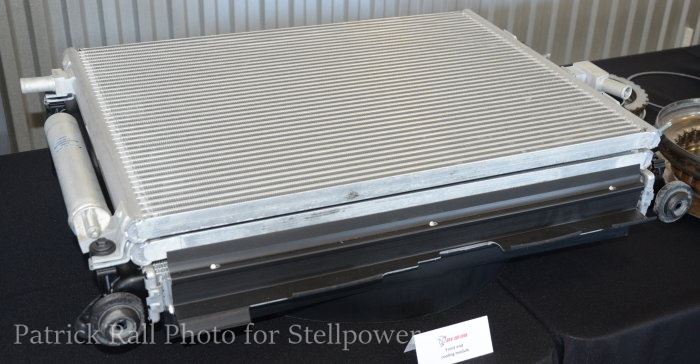
How many heat energy is 258kW? Well, if you applied that much energy to a quart of water, it would boil in just 1.2 seconds.
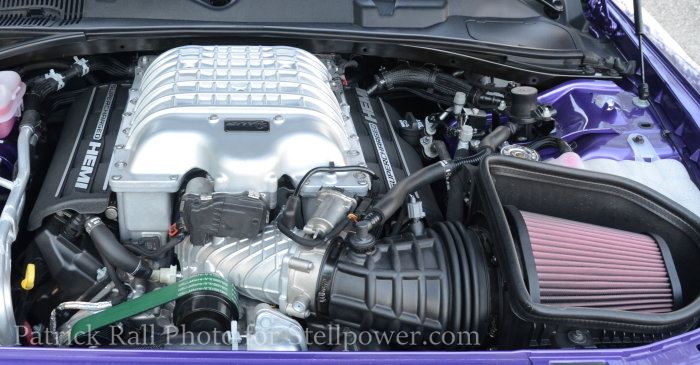
Finally, in addition to the cooling system components mentioned above, the Redeye and Super Stock both feature the SRT Chiller system. This system plumbs the frigid air from the aid conditioning system from the cabin to the intercooler system, helping to dramatically decrease the engine air intake temperatures – leading to more power and more consistent power.
Differences from the Demon
As you have likely noticed, we mentioned the Redeye and Super Stock along with the Demon for many of the components above, as the three share most of their key engine items. The Demon has a unique engine calibration for 93 octane fuel, leading to the unique output level of 808 horsepower while the Redeye has a calibration for 797 horsepower and the Super Stock has a calibration for 807 horsepower.

The Demon also has the crate PCM, which includes the preprogrammed engine tune for 100 octane race fuel, which neither the Redeye nor Super Stock models offer. Also, the Redeye and Super Stock have black valve covers while the Demon has red valve covers, but in the long run, the biggest difference between the Demon and either the Redeye or Super Stock engine is the standard engine tune and the high performance PCM with a race gas calibration.
Discover more from Stellpower - that Mopar news site
Subscribe to get the latest posts sent to your email.
